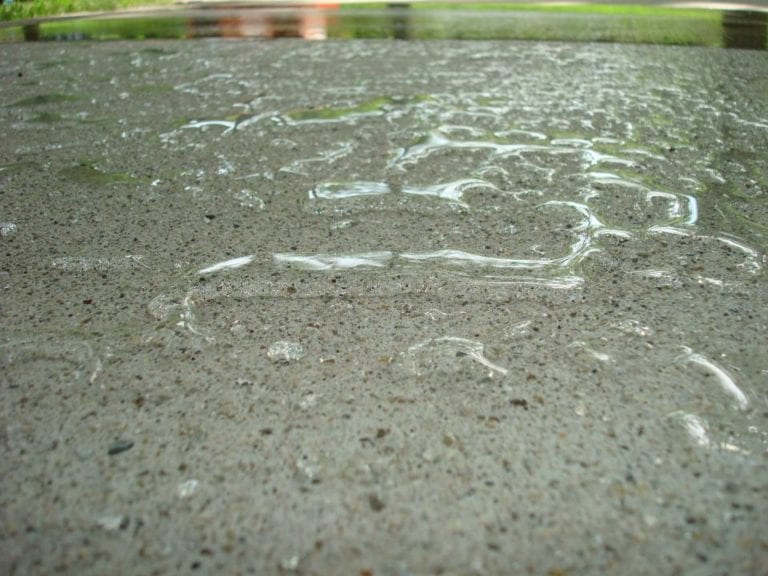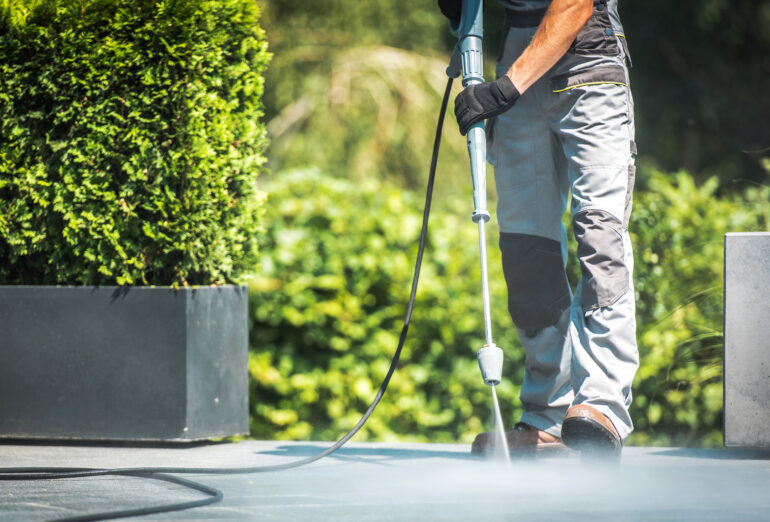Outdoor concrete is subject to harsh conditions throughout the entire year. Water from rain, extreme heat, stain damage from organic debris and the freeze-thaw cycle can all wreak havoc on driveways, patios and sidewalks. When you utilize outdoor concrete sealer, you provide an added layer of protection that can keep your concrete looking good and lasting a long time, no matter how hard you, and the climate, are on it.
All sealers are not created equal, however, and you need to choose the right one for your particular application. With so many options available on the market today, it is easy to feel overwhelmed. Consider the following steps to help you determine which outdoor concrete sealer is right for your specific needs.
Location
Not only should you consider the location of the concrete you’d like to seal in relation to your home or business, but you should also think about your physical location. Different climates will require different sealer types. If you live somewhere that experiences extreme cold and hot temperatures throughout the year, you’ll want to pick a sealer that will offer protection from the freeze-thaw cycle. If your climate is extremely wet, you’ll want one that offers greater waterproofing.
When it comes to the exact location of the concrete, think about sun exposure versus shade and foot traffic versus vehicle traffic. You’ll want a more durable concrete sealer if it is in an area that is driven on regularly.
Purpose
When considering purpose, first determine the desired outcome. Concrete surfaces serve variety of needs—and there are a variety of sealers best suited for any given need. Generally speaking, it’s best to think of longevity. If you want to add years to the life of your concrete, choose an outdoor concrete sealer that has the best characteristics possible, and at the highest concentration. In other words, it’s best to choose a high-quality concrete sealer. This will improve longevity, reduce required reapplications and help avoid having to repour or refinish your concrete down the road.
Finish
Different concrete sealers will give you different finishes, so you’ll want to think about how you want the finished product to look before you make your decision. Some sealers provide a glossy, wet look, which can be attractive but often requires more maintenance and upkeep. On the other hand, there are sealers that offer a matte finish, which is often the choice for garages and other areas that are not decorative. You can also choose sealers that provide slight coloring, so if you want to make a change, you can accomplish that as well through tinting.
Budget
If you have a tight budget but still want to seal your outdoor concrete, don’t be tempted to choose the cheapest product available. You get what you pay for when it comes to sealers. If you go the less expensive route, you’ll save money now but may end up paying more over time to reapply. Instead, consider a more expensive sealer to be an investment. It will last longer and you’ll save time and money in the long run by avoiding the cost of reapplication and maintenance over the years.
Maintenance
No matter which outdoor concrete sealer you choose, you’ll have to perform at least some regular maintenance. Even the top-of-the-line, highest-quality sealers will require reapplication eventually, especially in high-traffic areas. Keeping all of your outdoor concrete surfaces looking great is completely possible if you commit to choosing a quality product and remember to reapply on a regular basis.
Intermountain Concrete Specialties has a wide selection of outdoor concrete sealers. Stop by one of our seven locations for help choosing the right option for your home or business.

